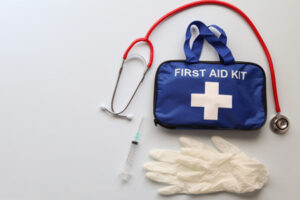
First Aid
Why is practical first aid training so important for you? To answer that question, here are two questions to be answered. What makes a great

Burns are tissue damage brought on by heat, chemicals, electricity, radiation or the sun.
A large number of Australians require first aid and further medical for accidental burns each year.
There can be further medical complications following burns so prevention of the burn is the first line of defence.
It’s the most important aspect in reducing the risk of burns thus it reduces the risk of skin damage.
How can I prevent most burns?
In a household, have a talk to all that lives there or carers to ensure that you are all following the plan.
Having fire evacuation drills is important to ensure all members know where to go so you can ensure that all are accounted for.
This stops family members from not knowing that you are outside in another location, but that family member races back it with severe consequences occurring.
The following are some steps to avoid burns.
The burns are usually classified into 3 categories.
They are:
First degree** burns are the mildest type of burn.
They are also called superficial burns. First degree burns damage only the epidermis, which is the first layer of skin. First degree burns usually don’t get infected or leave a scar. The skin may get red but won’t break and usually heals within 3–5 days.
Second degree** burns are also called partial thickness burns.
This type of burn damages the epidermis and the dermis. The dermis is the second layer of skin. Second degree burns are painful. The injured area can swell and appear red with blisters
Third degree burns are also called full thickness burns.
This type of burn goes through the two layers of the skin (epidermis and dermis) and affects deeper tissues, which may also be damaged or destroyed. The injured area can appear charred and may be black, white, or deep red in colour. This area is often numb to light touch.
The first aid treatment of burns is simple. Lots of water until help arrives. It might be as simple as water in a bucket that the patient has their hand in it or hosing the victim down with tap water.
Whatever the burn, normal temperature water is the universal first aid treatment. If water is in short supply, then cover the burn with a clean towel or sheet and head to the emergency room as quickly as possible for medical evaluation.
We have provided a link to our free burns first aid chart that you are welcome to display or pass on to your friends

Why is practical first aid training so important for you? To answer that question, here are two questions to be answered. What makes a great

Young people have not called for the paramedics because they thought that they would get into trouble There have been many occasions, especially with young

Why do people ignore chest pain symptoms when its a possible heart attack? In the news recently, a number of high profile people have possibly

First Aid certification – required in a range of occupations. First Aid certification has become required in a range of occupations and employment pathways. Learn